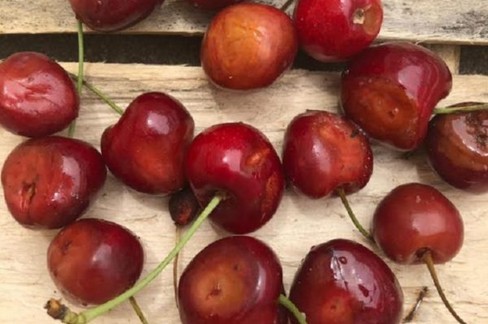Michigan State University has released a guide entirely dedicated to the processing, storage and use of cherries. This allows not only farmers, but also fruit enthusiasts, to be able to process and utilise a delicate and delicious fruit such as the cherry in the best possible way
Food Safety and Storage
- Select cherries that are not bruised or damaged.
- Wash hands before and after handling fresh produce.
- Wash cherries thoroughly under cool running Do not use soap.
- Store cherries in the refrigerator at or below 41 °F.
- Keep cherries away from raw meats and meat juice to prevent cross-contamination.
- For best quality and nutritive value, preserve only what your family can consume in 12 months.
Yield
1 pint = | 1¼ pound |
1 quart = | 2½ pounds |
1 lug = | 25 pounds or 8 to 12 quarts of canned cherries |
1 pound (unpitted) cherries = | 1¾ cups pitted |
How To Preserve
Freezing
Freeze pitted or unpitted cherries. If cherries are pitted, add ½ teaspoon of ascorbic acid to each quart of syrup used to prevent discoloration, or use a commercial ascorbic acid mixture and use according to label directions.
Tart cherries:
Select bright red, tree-ripened fruit. Stem, sort and wash thoroughly. Drain and pit. Pack using one of the following methods:
- Syrup pack method: This is the best method to use for serving cherries uncooked. Pack cherries into containers and cover with cold medium or heavy syrup depending on the tartness of the cherries (see “Syrups for Use in Freezing Fruits” table that follows). Leave ½- to 1½-inch headspace depending on container Seal, label, date and freeze.
- Sugar pack method: This is preferable for cherries to be used for pies or other cooked products. To 1 quart of cherries, add ¾ cup sugar. Mix until sugar dissolves. Pack into containers, leaving ½- to 1½- inch headspace depending on container. Seal, label, date and freeze.
- Pectin pack method: This alternative uses pectin and less sugar than the syrup pack and retains the fresh cherry flavor, color and texture. In a saucepan, combine 1 box of powdered pectin (1¾ ounces) with 1 cup Stir and boil 1 minute. Stir in ½ cup sugar and dissolve. Remove the pan from heat; add cold water to make 2 cups of syrup. Chill. Put cleaned and prepared fruit in a 4- to 6-quart bowl; add enough pectin syrup to glaze the fruit with a thin film. Gently fold fruit to coat each piece with syrup. Pack into freezer containers, leaving ½- to 1½-inch headspace depending on container type. Seal, label, date and freeze.
Sweet cherries:
Pack cherries into containers and cover with cold syrup choosing your preference from the table “Syrups for Use in Freezing Fruits” that follows. For a better quality product add ½ teaspoon (1500 mg) ascorbic acid to each quart syrup. Leave ½- to 1½-inch headspace depending on container type. Seal, label, date and freeze.
Syrups for Use in Freezing Fruits |
Type of syrup | Percent syrup* | Cups of sugar** | Cups of water | Yield of syrup (cups) |
Very light | 10 | ½ | 4 | 4½ cups |
Light | 20 | 1 | 4 | 4¾ cups |
Medium | 30 | 1¾ | 4 | 5 cups |
Heavy | 40 | 2¾ | 4 | 51/3 cups |
Very heavy | 50 | 4 | 4 | 6 cups |
*Approximate **In general, up to one-fourth of the sugar may be replaced by corn syrup or mild-flavored honey. A larger proportion of corn syrup may be used if a very bland, light-colored type is selected. The “Syrups for Use in Freezing Fruits” table is adapted from the National Center for Home Food Preservation table of the same name at https://nchfp. uga.edu/how/freeze/syrups.html. That table was extracted from So Easy to Preserve, 6th ed., 2014, Bulletin 989, Cooperative Extension Service, University of Georgia. Revised by E. L. Andress and J.A. Harrison. |
Read the full article: Michigan State University
To download the full report click here.
Cherry Times - All rights reserved












